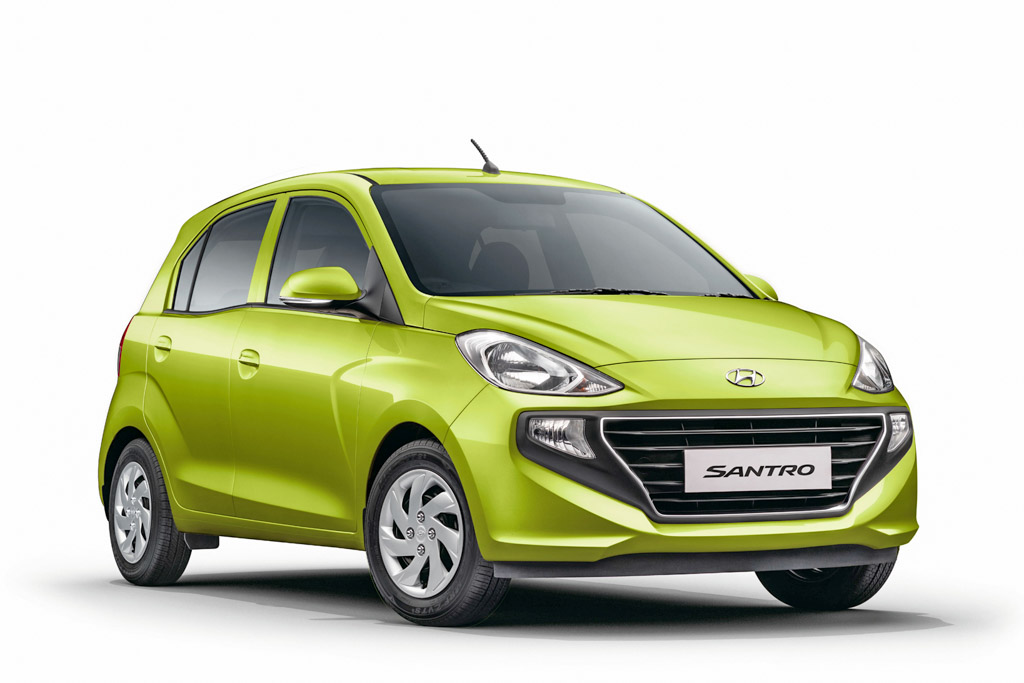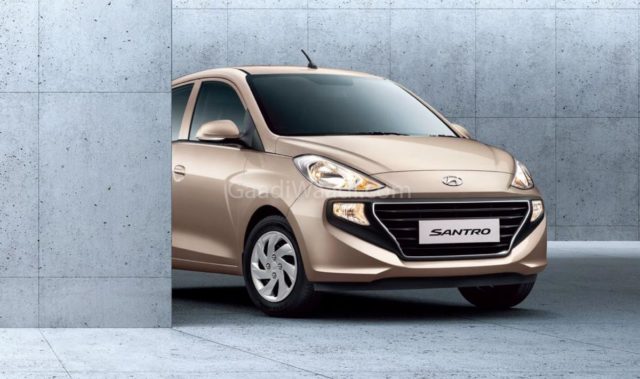
New Hyundai Santro competes against Maruti Suzuki Celerio, Tata Tiago and Renault Kwid in the Indian market with several segment first features
With much fanfare Hyundai introduced the new Santro on October 23 for the Indian customers. Priced between Rs. 3.89 lakh and Rs. 5.64 lakh (ex-showroom), it competes against Maruti Suzuki Celerio, Tata Tiago, Maruti Suzuki Wagon R and Renault Kwid. Hyundai admitted earlier that ever since the departure of previous generation Santro in 2014, the brand did lose a major contributor in the entry-level space.
Therefore, the new Santro does eye the 30 percent share in the base end of the spectrum. Hyundai won’t just limit the hatchback to domestic market as it will be locally made in Sriperumbudur and exported overseas from next year. Addressing markets in South Asia, Latin America and South Africa, Hyundai has set an initial target of 15,000 to 20,000 units.
Hyundai has reportedly allotted at least 25 percent of the new Santro’s total production to international arena. Despite the rise in fuel prices, the South Korean automaker garnered more than 23,500 online bookings for the new Santro ahead of the launch and it would have increased when dealers started accepting orders for Rs. 11,100 from October 22.
With its rivals Tiago enduring 8,377 units, Wagon R at 13,252 units, Celerio at 9,208 units and Kwid at 5,529 units last month, it is safe to assume that the new Santro aims to have its monthly sales stand at 9,000-10,000 units. Moreover, adding up the export target, Hyundai has busy tenure ahead. The company is already running at 100 percent capacity and is panning to launch several new products until 2020.
It has made way for additional one lakh volumes and wants to gradually increase its market share from 16 percent and the new Santro will play a big role in it. The 2018 Hyundai Santro is sold in seven colour options such as Diana Green, Typhoon Silver, Stardust Grey, Polar white, Marina blue, Fiery red, and Imperial beige.
Retailed in five variants, the modern hatchback derives power from a 1.1-litre, four-cylinder petrol engine producing 69 PS and 99 Nm torque and is mated to a standard five-speed manual transmission and Hyundai’s first-ever five-speed AMT as optional. Both have claimed fuel economy of 20.3 kmpl. The CNG version, on the other hand, makes 59 PS and 84 Nm and it returns 30.5 km/kg.

